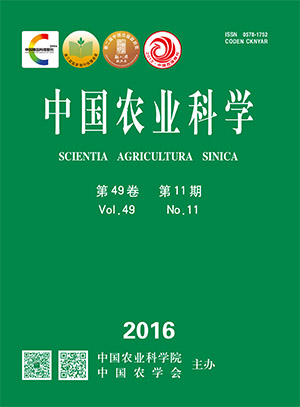【Objective】Al-induced secretion of Hydroxamates Cyclic from roots was investigated and we provided a theoretical basis for revealing the mechanism responsible for Al-resistance in
Zea Mays L..【Method】The experiment was conduced using a Zhengdan 958 variety and a Taiyu No.11 variety with Al treatment by hydroponics. The Al-resistance and the effect of Al on the secretion of Hydroxamates Cyclic from roots and Hydroxamates Cyclic ameliorated Al toxicity were studied by measuring the root elongation, Al content, callose content, Hydroxamates Cyclic secretion, and relevant indicators of Hydroxamates Cyclic-ameliorated Al toxicity among these two varieties.【Result】With comparison to the control treatment (without AlCl
3), root elongation was inhibited significantly, while Al and callose content of root tips increased significantly in Zhengdan with 10 μmol·L
-1 AlCl
3 treatment after 24 h. When root elongation was reduced by 47.77%, Al and callose content of root tips increased by 226.64% and 60.74%. On the contrary, there were no significant effects on the root elongation and callose content of root tips in Taiyu. Although Citrate secretion increased significantly by 41.28% from roots in Taiyu with 20 μmol·L
-1 AlCl
3 treatment after 44 h, Citrate secretion did not increase significantly from roots in Taiyu and Zhengdan with AlCl
3 treatment during 24 h with comparison to control treatment (without AlCl
3), meaning Al cannot induce Citrate secretion from roots in maize during 24 h. Al-induced Hydroxamates Cyclic (DIMBOA and MBOA) secretion from roots of Taiyu, the amount of Hydroxamates Cyclic secretion increased significantly with the increasing AlCl
3 concentration (10, 15 and 20 μmol·L
-1) and the duration of AlCl
3 treatment (3, 6, 9, 12 and 24 h), but Hydroxamates Cyclic secretion did not increased significantly from roots in Zhengdan with AlCl
3 (10, 15 and 20 μmol·L
-1). And dark condition can significantly improve the secretion of
Hydroxamates Cyclic in Taiyu and effectively reduce Al-induced (20 μmol·L-1 AlCl3) inhibition of root elongation compared to the light condition. DIMBOA and MBOA secretions increased by 40.81% and 72.02%, and root elongation increased by 33.15%. Compared to the sole Al (20 μmol·L-1 AlCl3) treatment, addition of DIMBOA (3 mg·L-1) and MBOA (3 mg·L-1) to Al solution can significantly increase root elongation, reducing Al content of root tips in maize. With the addition of DIMBOA and MBOA to Al solution, root elongation of Zhengdan increased by 14.16% and 13.85%, and Taiyu increased by 16.16% and 11.33%; Al content of root tips of Zhengdan was decreased by 39.94% and 43.54%, Taiyu decreased by 39.92% and 42.10%. On the other hand, 20 μmol·L-1 AlCl3 treatment increased significantly Hydroxamates Cyclic content of roots and leaves in Taiyu. However, Al treatment decreased significantly Hydroxamates Cyclic content of the leaves in Zhengdan. 【Conclusion】These results suggested that Al-resistance bears on Hydroxamates Cyclic secretion. Al-induced secretion of Hydroxamates Cyclic from roots may be an effective mechanism for maize under Al-stress, Hydroxamates Cyclic content of the leaves may be involved in the secretion in the maize.









